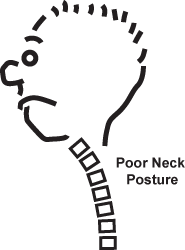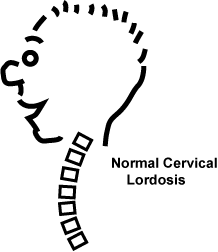Brian Schiff’s Blog
Injury Prevention, Sports Rehab & Performance Training Expert
We are consistently bombarded by screens in our daily life. Tablets, phones, laptops and our desire to be connected at all times encourages a froward head, rounded shoulders and a slumping posture. All of this spells too much flexion and mechanical overload on our posterior chain. Our bodies succumb to gravity. It is inevitable as we are naturally programmed to choose the path of least resistance.
I wanted to share an effective exercise to hit the cervical, thoracic and lumbar spine and improve overall postural strength and endurance. Begin lying face down over a stability ball as if you are diving into the pool (back will be rounded). Keep the feet about shoulder width apart. Next, retract the neck and lift the head and upper torso up as you simultaneously pull the elbows down and back as if you were pulling them into your back pockets. As you move into extension, squeeze the shoulder blades together at the top of the motion and pause for 1 second prior to returning to the start position. Perform 2 sets of 10-15 repetitions. The video below demonstrates how to execute the movement.
If you do not have a ball, the exercise can be done on the floor by placing 2-3 pillows beneath the hips in order to begin in a certain degree of flexion. As a general rule, avoid moving too far up into hyperextension. I prefer to have clients hold for a longer time at or slightly above neutral spine position to increase time under tension for a greater challenge.
It is no secret that all the technology in our world has made poor posture even more prevalent than before. I always say the brain picks the path of least resistance for the body and that tendency combined with gravity leads to a natural forward head posture. Hours spent on the computer, texting and sitting often promote a picture like this:

This positioning leads to lower cervical flexion and upper cervical extension thereby creating muscle imbalances. Keep in mind the rest of the spine takes its cues from the head and neck. A forward head encourages thoracic kyphosis, shoulder internal rotation and lumbar flexion. The back muscles give way to hanging on the static structures and the brain grows accustomed to this relaxed posture. The result = increased strain, muscle tension and mechanical deformation. In addition, neuromuscular activation of the proper postural muscles is compromised or shut down completely.
This sequence of events often gives way to postural pain, tightness, tension headaches and eventually even more intense pain and symptoms related to disc pathology. Essentially, the wrong structures spend too much time under tension, while our muscles go on a prolonged siesta throughout the day. Good posture takes hard work and looks like this:

So, some simple strategies to improve posture include an awareness of proper alignment (ears in line with the shoulders), a conscious effort to sit and stand with better posture and consistent postural strengthening. One of my favorite exercises to do is a simple prone neck retraction (see video below)
For a complete description of the exercise, click here to read my full column in PFP Magazine.
Finally, I want to leave you with some information from another clinician, Joe Brence, DPT on pain classification. He addresses the biomedical versus biopsychosocial approach to treating pain on The Manual Therapist’s blog. I tend to believe we must use components of both systems as well as our intuition and clinical experience, but it is an informative post. Click here to read his guest blog post on this.

